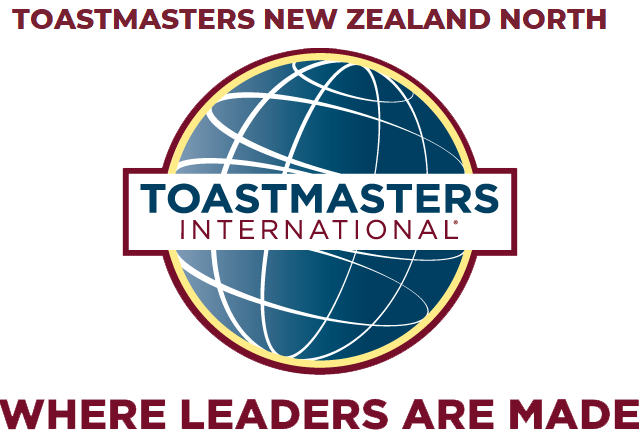The Toastmasters Educational Programme
“If you get out of Toastmasters all there is to get out of Toastmasters, you will never get out of Toastmasters” – Alun Chisholm DTM, District 72 Governor 2009-2010*
* Who got it from Helen Blanchard, first female member and first female International President
Introduction
Next: The Pathways Learning Experience
Toastmasters is unique. A person can join for a “quick fix” course – “I need to do a speech in three months and have no idea what to do” – and find themselves in a lifetime of learning.
Why? Because people change over time, and their learning needs change.
How? Two things. Firstly, the flexibility of the educational programme means you learn principles, not practices; and you can apply those principles in any way you wish. Secondly, you can get very different directions of learning by working to the same principles, but with different people.
In short – everyone uses the same programme, but because everyone is slightly different, every member gets something slightly different out of it.
For more information, including sections on managing Pathways as a member or Club/District Officer, please visit the Pathways sections of our District Officers, Club Officers and Members pages.
The Pathways Learning Experience
Next: Getting Started
The Pathways Learning Experience (“Pathways” for short) is a set of learning projects developed by Toastmasters International, and was fully implemented in July, 2020. Pathways is built on a computerised Learning Management platform supplied by Cornerstone on Demand, Inc.
The key to understanding Pathways is to recognise that adapting a corporate platform to a social organisation takes time. Therefore, the education programme is a living document. It changes according to evaluation from members of Toastmasters.
The program is organised into a set of 11 learning paths. Members choose from this set based on the skills they want to learn, so your choice of path is based on the reason you joined Toastmasters.
You can do as many paths as you wish, but ideally the reason for choosing a path is always the same. It is based on turning weaknesses into strengths.
Getting Started
Next: Not Just About Speaking
This section covers the steps every member takes when they join Toastmasters. As a new member, Toastmasters creates an account for you. This is based on a membership number, which is yours for life. Click the descriptions below for links that will help you take each step.
Set up your account
Your details have been transcribed from your application form. It is worth taking a few minutes to check they are correct, add an additional email, if you wish and get familiar with your member profile. Our Index of short tutorial videos covers the basics of logging on to www.toastmasters.org, as well as many aspects of using Pathways.
NOTE: Pathways changes over time. Therefore, the detail of the screen you see may not exactly match the video, but should cover the same process. If not, please contact our Webmaster.
A question to ask yourself
You’ve watched the last video, and it talks about “Choosing a Path”. Before you do that, ask yourself “What was my main reason for joining Toastmasters?”
“To improve my communication skills and/or confidence” is a good answer – but also reason to ask “Where do I think I most need to improve? Where am I not comfortable?” If you’re not sure, it helps to talk it over with your mentor or your club’s Vice President of Education. They are there to help you.
Tips on choosing a path
If your aim is definitely to be a professional speaker, then “Presentation Mastery” is your path.
If not, then there are several choices, based on how you answered the last section. You may find it useful to:
- Take the self-assessment, by yourself or with a more experienced member
- Review the path summaries at the Pathways overview page – whether the path was recommended or not. The paths and their required projects are also highlighted on this two-page summary
- Read this blog page on the subject. You’re in good company – it has 200,000 page views, and there is a good reason for that. When you have time, explore the blog.
- You may also find this summary from District 4 useful; there is also a version for phones
Your Icebreaker speech
The “Icebreaker” is the speech where you introduce yourself to the club, talking briefly about background, family, interests – whatever you want. It is also a great chance to learn the benefit of working with a mentor.
Watch this short video to learn about preparing for your Icebreaker. As before, your screen may look different but the steps are the same.
After giving your speech
As they say, the job’s not finished until the paperwork is done! Watch a short video that shows how to complete your project, again different screens, same steps.
You’ll see that buttons are now blue, rather than red – you’ll also see the “tick” that shows you have completed that piece of work. This is shown throughout Pathways and is a great guide. No tick means you have at least one more step to do on that task.
If in doubt.....ASK!
Always remember the meaning of our mission – every Toastmaster is there to help every other Toastmaster. However, sometimes you have to give yourself a little push to start – that is part of the learning process.
Within your club, your Vice President (Education) is the person best able to help – but in practice it doesn’t matter who you ask as long as you ask someone.
Within the District, try an email to the Pathways Help Desk (pathwayshelp@d112tm.org.nz) or join the Pathways Discussion Forum on Facebook.
Not Just About Speaking
Next: The Next Path
Toastmasters includes the phrase “WHERE LEADERS ARE MADE” for a good reason. Very few join to become better leaders. However:
- The education programme, given time, shows you how to enjoy an audience
- People start to listen to you because you communicate ideas more clearly
- People start to follow your ideas
- If they are following you, aren’t you leading them?
In short – by learning to lead yourself, by learning to get your point across, you have been made into a leader. Formal or informal does not matter – your ideas and opinions count for more than they used to.
Ralph Smedley, the founder of Toastmasters, put it well:
“People are more willing to follow a leader who knows where he is going.”
This is why, as you advance along a path, there is increasing emphasis on leadership and teamwork. However, under every project there is always communication, usually a speech to your club about what you learned from that change of emphasis.
The Next Path
Next: Other Activites
As we said, very few join to become better leaders.
With the upper two levels placing more emphasis on leadership, and given you are likely to be in your second year as a Toastmaster, this is a good time to look back at what you have achieved. It is also a good time to look at how you have changed in outlook, confidence and what you want from Toastmasters.
Remember that question you asked yourself? Time to ask it again – because the next path will help you look at not what you are good at, but what you would like to improve. John F Kennedy put it best:
“We choose to go to the Moon in this decade not because it is easy, but because it is hard. That goal will serve to organize and measure the best of our energies and skills“
There is nothing in Toastmasters that everyone will find easy. However, there is also nothing that no-one can do. The question is not whether you can or can’t do something – its whether you want to.
Quite often, members ask if all the projects have to be done in sequence. When Pathways was first available that was the case – but not today. You can do projects in any order. However, you should ask if you get the best learning by doing so. For the first path, you will get your best result by doing projects roughly in order for the first two levels. After that, the choice is yours.
Other Activities
“Everyone knew it was impossible, until a fool who didn’t know came along and did it.” – Albert Einstein
With Toastmasters, you always start by helping yourself. As you progress, you start to help others as well – first your club as an officer, then the organisation in one of the many roles available that contribute to the requirements for Distinguished Toastmaster (DTM).
That’s not the whole story. As long as you’re willing to accept new challenges, you can organise or help with any number of special events or challenges. That’s why the quote about what you can get out of Toastmasters is so true. If you’re having fun, why would you want to leave?
“We learn best in moments of enjoyment” – Ralph Smedley
For more information, including sections on managing Pathways, please visit our Club Officers and Members pages.
If you are enjoying Pathways and would like to encourage others to do the same, please consider joining the Pathways Champions Group. To find out more, visit the Pathways Champions pages.


